Catégories
Documents disponibles dans cette catégorie (220)
 Ajouter le résultat dans votre panier Affiner la recherche
Ajouter le résultat dans votre panier Affiner la recherche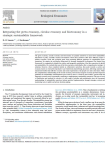
Article
The green economy, circular economy and bioeconomy are popular narratives in macro-level sustainability discussions in policy, scientific research and business. These three narratives offer three different recipes to address economic, social and[...]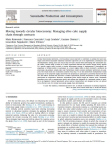
Article
M. Raimondo ; F. Caracciolo ; L. Cembalo ; G. Chinnici ; G. Pappalardo ; M. D'Amico |Circular bioeconomy represents a recent political vision expected to contribute in tackling the main challenges faced when sustainable industrial transition trajectories are to be implemented. Coordination and interdependence among actors are cr[...]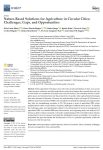
Article
A. Canet-Martí ; A. Canet-Martí ; R. Pineda-Martos ; R. Junge ; K. Bohn ; T.A. Paço ; C. Delgado ; G. Alencikiene ; S.L. Skar ; G.F.M. Baganz |Urban agriculture (UA) plays a key role in the circular metabolism of cities, as it can use water resources, nutrients, and other materials recovered from streams that currently leave the city as solid waste or as wastewater to produce new food [...]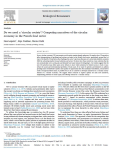
Article
How a circular economy (CE) can promote social equity remains largely unknown. We analyze how CE narratives affect interpretations of problems and actions on waste in the French food sector, particularly around the Loi Garot. We identify CE narr[...]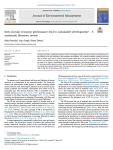
Article
R. Panchal ; A. Singh ; H. Diwan |The paper provides a systematic literature review to investigate whether circular economy (CE) performance in the technical cycle will contribute to the sustainable development. Two academic databases, namely Scopus and Web of Science were used [...]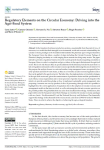
Article
C. Zarbà ; G. Chinnici ; G. La Via ; S. Bracco ; B. Pecorino ; M. D'Amico |In the transition from linear production systems, unsustainable from the point of view of resources, to a model that finds strength in environmental, social and economic sustainability, the circular economy paradigm is the foundation that facili[...]
Article
T.G. Morais ; R.F.M. Teixeira ; C. Lauk ; M.C. Theurl ; W. Winiwarter ; A. Mayer ; L. Kaufmann ; H. Haberl ; T. Domingos ; K.-H. Erb |Sustainable food systems face trade-offs between demands of low environmental pressures per unit area and requirements of increasing production. Organic farming has lower yields than conventional agriculture and requires the introduction of nitr[...]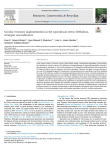
Article
In the current context of resource scarcity, global climate change, environmental degradation, and increasing food demand, the circular economy (CE) represents a promising strategy for supporting sustainable, restorative, and regenerative agricu[...]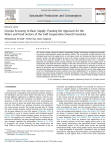
Article
M. Al-Saidi ; P. Das ; I. Saadaoui |The circular economy concept can enhance sustainability through restructuring consumption and production patterns using innovative designs and business models. This core premise is highly relevant for the interlinked water and food supply sector[...]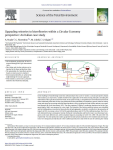
Article
A. Ncube ; G. Fiorentino ; M. Colella ; S. Ulgiati |In the challenge of transforming waste into useful products that can be re-used in a circular perspective, Italian wine industry can represent a suitable model for the application of the bioeconomy principles, including the valorisation of the a[...]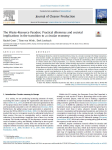
Article
The European Union has vowed to transition from a linear to a circular economy (CE). Many innovations, new business models, and policies have begun to emerge to support the push for further institutionalizing CE practices. A large portion of the[...]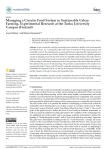
Article
People around the world pay increasingly more attention to health, social, environmental, and ethical issues. As a consequence, they seek value in food that is fresh, less processed, and sustainably sourced. The article presents an experimental [...]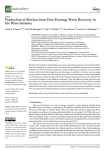
Article
The production of residual biomass, such as vine pruning, presents environmental problems since its elimination is usually carried out through the uncontrolled burning of the remaining materials and with the emission of greenhouse gases without [...]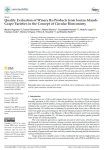
Article
M. Xagoraris ; I. Oikonomou ; D. Daferera ; C. Kanakis ; I.K. Lappa ; C. Giotis ; C.S. Pappas ; P.A. Tarantilis ; E. Skotti |The aim of this work was the study and evaluation of winery by-products in the framework of the circular bioeconomy. Grape seeds and grape skins from Greek Ionian Islands varieties were analyzed in an attempt to provide the appropriate basis for[...]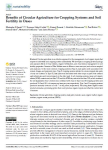
Article
M. El Janati ; N. Akkal-Corfini ; A. Bouaziz ; A. Oukarroum ; P. Robin ; A. Sabri ; M. Chikhaoui ; Z. Thomas |Circular agriculture is an effective approach for the management of soil organic inputs that improves soil fertility and cropping system sustainability. We developed a cropping system typology and assessed effects of crop rotation, organic ferti[...]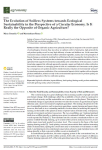
Article
Soilless cultivation systems were primarily developed in response to the excessive spread of soil pathogens; however, they also allow an optimal control of plant grow, high productivity and product quality as well as very high efficiency of wate[...]
Article
About 30% of food produced globally is lost or wasted along the food supply chain. In this sense, the objective of this research is to identify and systematize scientific publications relating food losses and wastes with solutions based on the c[...]
Article
Terraced landscapes were for centuries forms of sustainable and multifunctional land management, results of a long and intimate relationship between peoples and their environment. They demonstrated a rich cultural diversity and agrobiodiversity [...]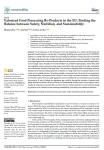
Article
Food businesses in the European Union are preparing for a carbon-neutral future by gradually transitioning to a circular way of operating. Building upon results from the EU REFRESH project, we consider the most valuable food processing by-stream[...]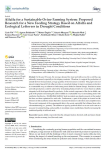
Article
C. Viti ; A. Bellabarba ; M. Daghio ; A. Mengoni ; M. Mele ; A. Buccioni ; G.C. Pacini ; A. Bekki ; K. Azim ; M. Hafidi ; F. Pini |In the past 10 years, the average demand for meat and milk across the world has significantly increased, especially in developing countries. Therefore, to support the production of animal-derived food products, a huge quantity of feed resources [...]
Article
A. Amato ; M. Mastrovito ; A. Becci ; F. Beolchini |The agriculture sector produces significant amounts of organic residues and the choice of the management strategy of these flows affects the environmental sustainability of the sector. The scientific literature is rich with innovative processes [...]
Article
Cet article explore les mesures territoriales et systémiques adaptées à une bioéconomie circulaire territoriale en mobilisant la littérature sur les symbioses industrielles à la croisée de l’analyse de réseau et de l’économie industrielle. L’aut[...]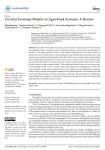
Article
M. Hamam ; G. Chinnici ; G. Di Vita ; G. Pappalardo ; B. Pecorino ; G. Maesano ; M. D'Amico |Around the world, interest is growing in the circular economy in response to the current unsustainable model of production and consumption based on increased use and depletion of resources. This paper provides a review of the academic literature[...]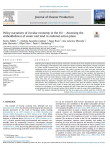
Article
T. Fidélis ; A.S. Cardoso ; F. Riazi ; A.C. Miranda ; J. Abrantes ; F. Teles ; P.C. Roebeling |Following the challenges of the European Union (EU), member states have adopted circular economy (CE) plans and strategies, with objectives and measures to foster circularity. Although the concept of CE refers to various natural resources such a[...]
Article
K. Mahroof ; A. Omar ; N.P. Rana ; U. Sivarajah ; V. Weerakkody |In order to grow the food the world needs, there is a pressing need to gain a more detailed understanding of how innovative solutions can be incorporated into the agricultural supply chains, particularly within production, for environmentally, e[...]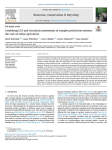
Article
Local food production through urban agriculture (UA) is promoted as a means to make cities more sustainable. However, UA does not come free of environmental impacts. In this sense, optimizing urban resources through circular economy principles o[...]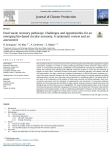
Article
R. Santagata ; M. Ripa ; A. Genovese ; S. Ulgiati |The transition towards a Circular Economy in the agri-food supply chain will require appropriate support mechanisms. Globally, 1/3 of food is wasted, generating by-products which could be treated and processed. In a bioeconomy perspective, quali[...]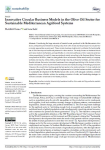
Article
Considering the large amounts of harmful waste produced in the Mediterranean olive sector, entrepreneurial initiatives creating value from olive waste and by-products via circular bio-economy approaches are reviewed. These circular business mode[...]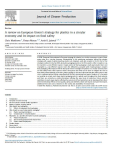
Article
C. Matthews ; F. Moran ; A.K. Jaiswal |In 2018, European Union adopted a European strategy for plastics in a circular economy as a part of their action plan for a circular economy. Sustainability is the underlying motivation behind the plastics strategy with a goal of addressing how [...]
Article
M. Donner ; A. Verniquet ; J. Broeze ; K. Kayser ; H. De Vries |For a transition from a linear, ‘take-make-dispose’ economy to a sustainable usage of all constituents of renewable resources in cascading and circular pathways, new business models valorising streams that are currently considered as waste are n[...]









